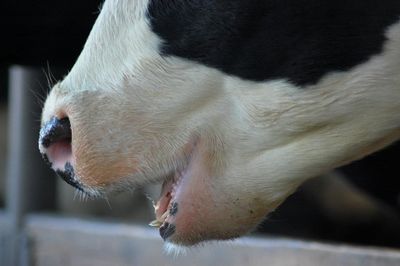National reference laboratory for foot-and-mouth disease and vesicular diseases of animals
The National Reference Laboratory carries out comprehensive laboratory diagnosis of foot-and-mouth disease (FMD), vesicular swine disease (VSD) and vesicular stomatitis (VSV), including differential diagnosis.
The NRL for foot-and-mouth disease and vesicular diseases of animals was established at SVU Prague in 1995 when construction of the BSL-3 laboratory was completed. Between 1995 and 2016, the laboratory maintained live strains of the SLAK virus (serotypes O, A, C, SAT1, SAT2, SAT3 and Asia 1), enabling virus neutralisation tests to be performed to detect SLAK virus antibodies. During this period, the laboratory also cultured the SLAK virus in vitro to detect it in suspected material. However, in 2016, as part of efforts to reduce biological risk, it was decided to destroy all live SLAK virus strains and stop performing virus neutralisation tests and virus isolation on cell lines.
The NRL coordinates the diagnosis of swine vesicular disease in other laboratories, namely SVÚ Jihlava and SVÚ Olomouc. The NRL participates in annual international comparative tests for the detection of SLAK and VD antibodies and viruses, organised by the EURL for SLAK. The laboratory also prepares transport buffers for foot-and-mouth disease diagnosis. The laboratory's quality control system complies with EN ISO/IEC 17025:2018.
The NRL participates in annual comparative interlaboratory tests organised by the European Reference Laboratory for Foot-and-Mouth Disease (EURL-FMD, ANSES, SCIENSANO).
The diagnosis of infection is based on detecting both the virus and antibodies. The epithelium of the aphthae and the vesicular fluid contained within them are the most suitable specimens for detecting the virus. Other possible specimens include oral swabs, swabs of ruptured blisters, clotted blood and milk. In euthanised or dead animals, the salivary glands, myocardium and lymph nodes may be collected. The virus can be investigated using real-time RT-PCR and antigen ELISA. Once the presence of the virus has been confirmed, the serotype can be determined by ELISA and the virus sequenced.
Serological diagnostics can distinguish between antibodies resulting from infection and those resulting from vaccination. Antibodies to SLAK appear in the blood serum 2–4 days after the onset of clinical symptoms.





